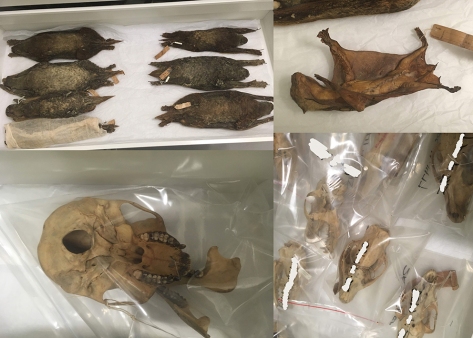Warning: this article contains pictures of dead animals. If you’re a little squeamish, maybe give this one a pass.
There are two main ways of preserving specimens – dry and wet. Dry specimens can stay preserved simply by staying in a cool and dry environment. That’s why the temperature and humidity levels are rigidly controlled in the dry collection.
 I’d say this is a good place for an Instagram photoshoot.
I’d say this is a good place for an Instagram photoshoot.
The dry collection is located on one of the upper floors of the museum itself. It is a labyrinth of metal cabinets known as compactors, all arranged in straight rows. Each compactor can be moved left and right simply by turning a wheel, so that they can be jam packed together to conserve space. When anyone needs to use a particular cabinet, they can simply move them apart again to open the doors. It’s chicken soup for the neat freak’s soul.
The dry collection hosts a mind-boggling variety of specimens. The pale remains of corals!
 Birds, mammals, sea shells, eggs, even nests! Even poop! Scientists really go for anything, huh?
Birds, mammals, sea shells, eggs, even nests! Even poop! Scientists really go for anything, huh?





 Objectively? Probably the coolest drawers you’ll ever pull open.
Objectively? Probably the coolest drawers you’ll ever pull open.
There’s also a little herbarium, which seems indistinguishable from an ordinary office filing cabinet at first. Plant specimens are dried and pressed, much in the same way you see artists pressing flowers poetically into the pages of books. They’re sealed in Ziploc bags for future reference.

Because my hands are too crude and clumsy, I didn’t get to open them. But, you know, they’re plants, but flat.
Keep reading to continue our tour at the wet collections!

 A sperm whale recovered by the Lee Kong Chien Natural History Museum. Photos by (clockwise from left): Marcus Chua, Becky Lee, & Letchumi Mani
A sperm whale recovered by the Lee Kong Chien Natural History Museum. Photos by (clockwise from left): Marcus Chua, Becky Lee, & Letchumi Mani
 Jubilee whale fund logo by the Lee Kong Chien Natural History Museum
Jubilee whale fund logo by the Lee Kong Chien Natural History Museum